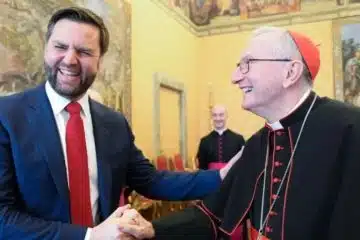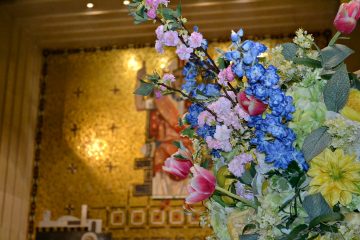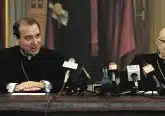The Catholic Moment: A conversation with God
November 4, 2011
By Father Earl Fernandes
My last name has been butchered more times than I care to count. Most often it is misspelled as Fernandez. I have also been called Hernandez, Rodriguez, and most recently, Gonzalez. One parishioner calls me Speedy after the famous cartoon character, because I walk quickly, talk quickly and do everything at rapid pace.
I wish I could slow down. How many people tire of our hectic pace of life? The pressures at work, the juggling of schedules, shuttling children here and there for practices, and the need to still carry out the “ordinary” tasks of life at home are taking their toll. When do we ever rest? When do we ever pray or meditate? St. Alphonsus Liguori says that “He who prays will be saved, but he who prays not will certainly be condemned.”
The pace of life has led to the neglect of meditation, which Alphonsus describes as “nothing more than conversation between God and the soul in which the soul pours forth its affections, desires, fears and petitions, and God speaks to the heart, causing it to know His goodness, and the love which He bears it, and what it must do to please Him.”
How does one meditate? If mental prayer is first and foremost a conversation with God, then the first step is to find a quiet “place” to carry out this conversation. There needs to be “solitude” of heart, even if we pray in a busy workplace. Scripture instructs us at times to “go to our room and pray to our Father in secret.”
St. Jose Maria Escriva recommends beginning each day with 60 seconds of silence. In the “solitude” of our hearts, we make a simple act of faith in God (I believe in you.), acknowledging that we are in the holy presence of God, expressing sorrow for our failings (I am sorry for my sins.) in spite of God’s immense love. Then we tell God that we love Him and ask Him for His help and enlightenment to know and follow His will (I love you, Lord, and I need your help to find my way, to find your way.).
Just as athletes need to have “mental concentration” to perform well, this simple preparation in “solitude” gives focus. The subject of meditation can be chosen: creation; a passage from Scripture; one of the mysteries of faith; the person of Christ himself, especially in His birth or passion; passages from the Imitation of Christ or the lives of the saints. After spending some time in stillness with the subject, the passage can be applied to our lives, concrete situations, goals, joys and sorrows: “What does this mean for my life?” That can be a very scary question.
Of course, we need to not only ask that question to ourselves, but remembering that prayer is conversation with God, we ask the Divine Master what it means, and we listen for an answer. Our conversation does not need to be complicated. It can be simple. God is our friend who deeply wants to have an honest conversation with us. God is our friend who has a truly saving message for us. Having heard this message, which sometimes comes in a “whisper,” a person can ask God for the grace to receive this message, the gifts God wishes to give and for the courage to follow through.
Sometimes “mental prayer” turns into an intellectual activity, which is why it is important to be attentive to what we are feeling. It is also important not to reduce the conversation to “feelings,” lest prayer turn into something hopelessly sentimental. The final step — the “follow through” in mental prayer is making a resolution — a practical resolution that is a result of this conversation. If one meditates to achieve union with God, then union should bring about a gradual transformation of the person. Making a resolution helps a person take stock of his or her situation before God and to say that with God’s grace he or she is going to do something about it.
Meditation is neglected today. Perhaps a first “passage” for our meditation could come from the opening lines of the Psalms (Psalm 1:1-2): “Blessed are they who ponder the law of God day and night.”
Father Fernandes is an assistant professor of moral theology and dean of the Athenaeum of Ohio/Mount St. Mary’s Seminary.













